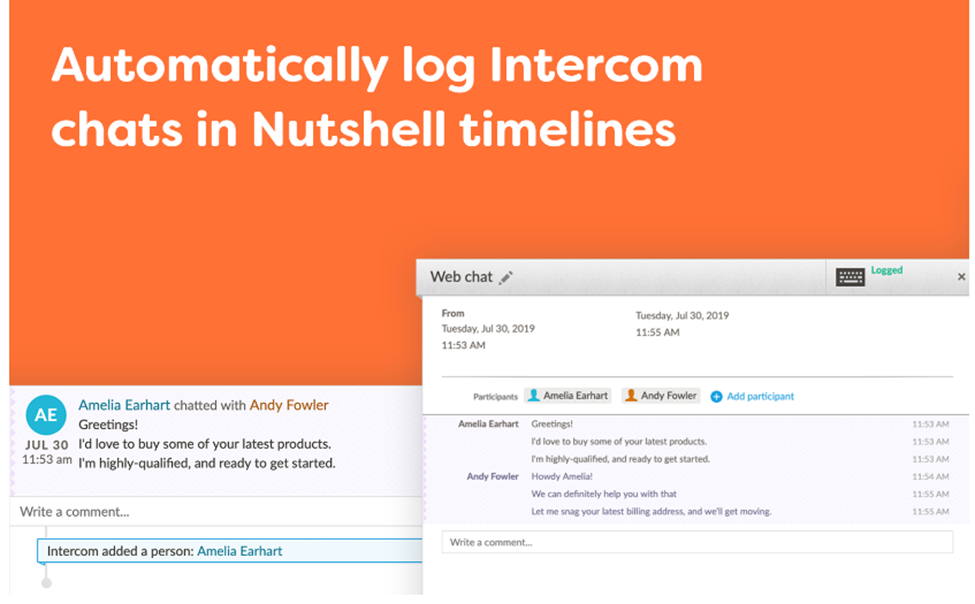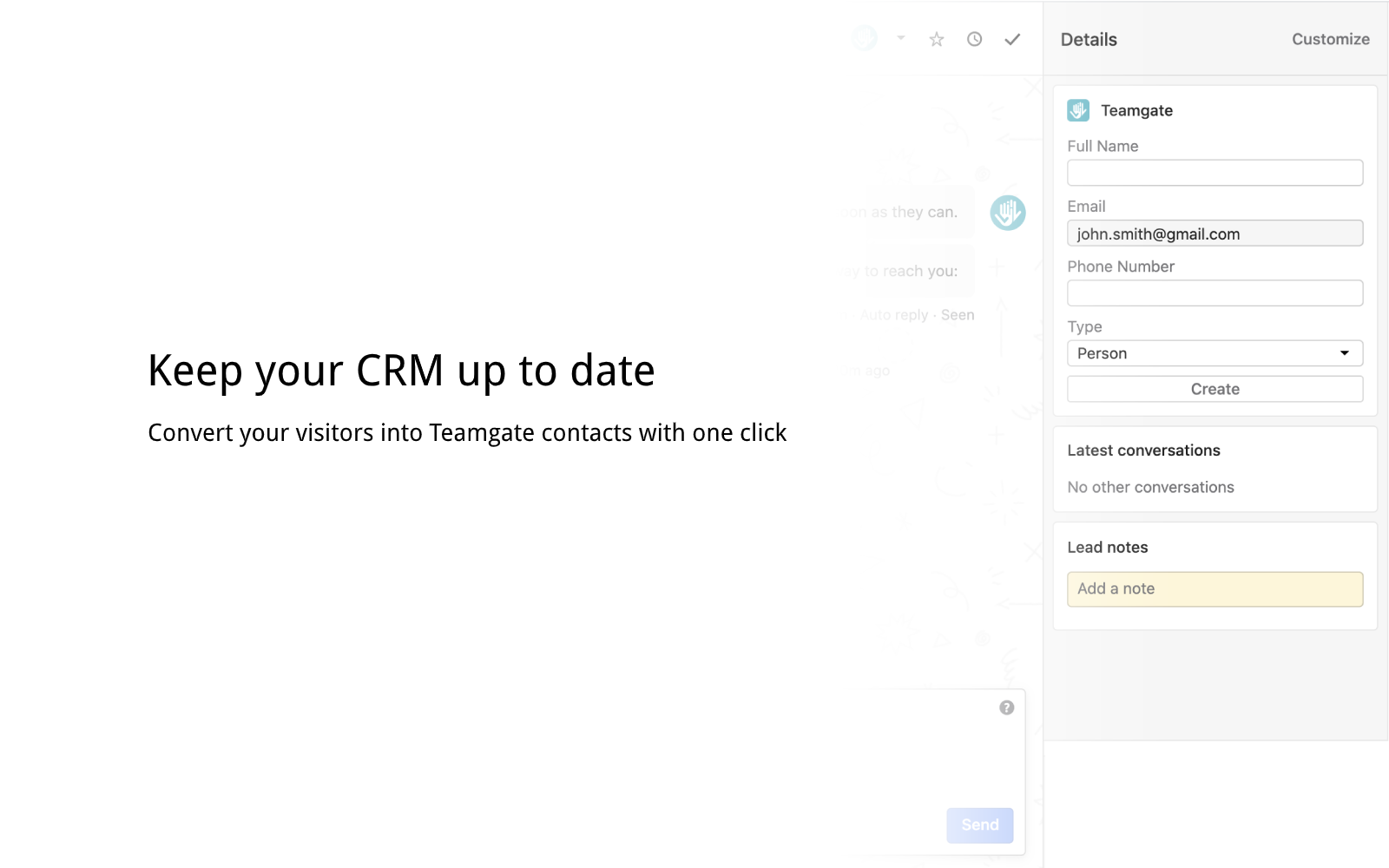The Power of Integration: Why CRM Integration with Intercom Matters
In today’s fast-paced digital landscape, businesses are constantly seeking ways to streamline operations, improve customer experiences, and boost overall efficiency. One of the most effective strategies for achieving these goals is through seamless integration between essential software systems. Specifically, the integration of a Customer Relationship Management (CRM) system with a customer communication platform like Intercom offers a wealth of benefits that can transform how you interact with and support your customers.
This comprehensive guide will delve into the intricacies of CRM integration with Intercom, exploring the ‘what,’ ‘why,’ and ‘how’ of this powerful combination. We’ll dissect the advantages, provide actionable steps for implementation, and highlight real-world examples of businesses that have successfully harnessed the power of this integration. Whether you’re a seasoned CRM user or just starting to explore the possibilities, this guide will equip you with the knowledge and insights needed to make informed decisions and unlock the full potential of your customer relationships.
Understanding the Core Components: CRM and Intercom
Before diving into the integration process, it’s crucial to understand the individual roles and functionalities of a CRM system and Intercom. These two platforms, while distinct, are designed to work in tandem, creating a synergistic effect that amplifies their individual strengths.
Customer Relationship Management (CRM)
A CRM system acts as the central hub for managing all interactions with your customers and potential customers. It’s a database that stores and organizes customer data, including contact information, purchase history, communication logs, and more. Key features of a CRM system include:
- Contact Management: Storing and organizing customer contact details, including names, email addresses, phone numbers, and physical addresses.
- Lead Management: Tracking leads through the sales pipeline, from initial contact to conversion.
- Sales Automation: Automating repetitive sales tasks, such as sending follow-up emails and scheduling appointments.
- Marketing Automation: Automating marketing campaigns, such as email blasts and social media posts.
- Reporting and Analytics: Providing insights into customer behavior, sales performance, and marketing effectiveness.
Popular CRM systems include Salesforce, HubSpot CRM, Zoho CRM, and Microsoft Dynamics 365.
Intercom: The Customer Communication Platform
Intercom is a customer communication platform designed to facilitate direct and personalized interactions with your customers. It provides a suite of tools for:
- Live Chat: Enabling real-time conversations with customers on your website and within your app.
- Messaging: Sending targeted messages to customers based on their behavior and preferences.
- Help Desk: Providing a self-service help center and support ticketing system.
- Product Tours: Guiding users through your product or service with interactive tutorials.
- Automation: Automating repetitive tasks, such as answering frequently asked questions.
Intercom’s focus is on fostering meaningful conversations and providing proactive support to enhance the customer experience. It’s known for its user-friendly interface and powerful features that make it easy to connect with customers in real-time.
The Synergy of Integration: Why CRM Integration with Intercom is a Game-Changer
Integrating your CRM system with Intercom creates a powerful synergy that enhances both platforms and significantly improves your ability to manage customer relationships. Here are some of the key benefits:
1. Enhanced Customer Data Visibility
One of the most significant advantages of integration is the ability to seamlessly access customer data from both systems. When a customer interacts with you through Intercom, you’ll have immediate access to their information stored in your CRM, such as their purchase history, support interactions, and any other relevant details. This comprehensive view allows you to:
- Personalize interactions: Tailor your conversations and support to each customer’s specific needs and past interactions.
- Provide faster and more efficient support: Quickly access the information you need to resolve customer issues.
- Identify upsell and cross-sell opportunities: Recognize opportunities to offer relevant products or services based on customer behavior.
2. Improved Sales and Marketing Efficiency
CRM integration with Intercom streamlines your sales and marketing efforts by providing valuable context for your interactions. For example, when a lead engages in a live chat conversation, you can immediately see their lead score, sales stage, and any other relevant information from your CRM. This allows you to:
- Qualify leads more effectively: Quickly assess whether a lead is a good fit for your product or service.
- Personalize sales conversations: Tailor your sales pitch based on the lead’s specific needs and interests.
- Automate lead nurturing: Trigger automated email sequences and other marketing activities based on customer behavior in Intercom.
3. Streamlined Support and Customer Service
Integration significantly improves the efficiency of your customer support team. When a customer contacts support through Intercom, your support agents can instantly access their CRM data, including their past support tickets, purchase history, and any other relevant information. This allows them to:
- Provide faster and more personalized support: Quickly understand the customer’s issue and offer a tailored solution.
- Reduce resolution times: Access the information they need without having to switch between multiple systems.
- Improve customer satisfaction: Provide a more seamless and efficient support experience.
4. Enhanced Customer Segmentation and Targeting
By combining data from your CRM and Intercom, you can create highly targeted customer segments for your marketing and communication efforts. For example, you could segment customers based on their purchase history, website activity, and Intercom interactions. This allows you to:
- Deliver more relevant messaging: Send targeted messages to specific customer segments, increasing engagement and conversions.
- Improve customer retention: Proactively reach out to customers who are at risk of churning.
- Increase the effectiveness of your marketing campaigns: Target your campaigns to the most receptive audience.
5. Data-Driven Decision Making
Integrating your CRM with Intercom provides a more holistic view of your customer interactions, allowing you to make data-driven decisions. You can track metrics such as customer satisfaction, support ticket resolution times, and conversion rates. This data can be used to:
- Identify areas for improvement: Pinpoint areas where you can improve your customer experience.
- Optimize your marketing and sales strategies: Refine your strategies based on data insights.
- Measure the effectiveness of your customer communication efforts: Track the impact of your Intercom campaigns on your overall business goals.
Implementing the Integration: A Step-by-Step Guide
The process of integrating your CRM with Intercom can vary depending on the specific CRM system you use. However, the general steps are typically similar. Here’s a step-by-step guide to help you get started:
1. Choose the Right Integration Method
There are several ways to integrate your CRM with Intercom. The best method for you will depend on your technical expertise and the features offered by your CRM and Intercom. Some common methods include:
- Native Integrations: Many CRM systems and Intercom offer native integrations, which are pre-built connectors that make it easy to connect the two platforms. This is often the easiest and most straightforward option.
- Third-Party Integration Platforms: Platforms like Zapier and Automate.io can connect your CRM and Intercom, even if native integrations aren’t available. These platforms allow you to create custom workflows and automate tasks between the two systems.
- Custom Integrations: If you have in-house development resources, you can create a custom integration using the Intercom API and your CRM’s API. This provides the most flexibility but requires more technical expertise.
2. Set Up Your CRM and Intercom Accounts
If you haven’t already, set up your accounts for both your CRM system and Intercom. Ensure that your accounts are properly configured and that you have the necessary permissions to access and manage the data. Familiarize yourself with the features and functionalities of both platforms.
3. Choose Your Integration Method and Follow the Instructions
Based on the integration method you’ve chosen, follow the specific instructions provided by your CRM provider, Intercom, or the third-party integration platform. This typically involves:
- Connecting your accounts: Authorizing the integration platform to access your CRM and Intercom data.
- Mapping fields: Defining which data fields from your CRM will be synced with Intercom and vice versa. This is crucial to ensure that the data is correctly transferred between the systems.
- Configuring workflows: Setting up automated workflows, such as creating new CRM contacts when a new conversation starts in Intercom.
4. Test the Integration
Once the integration is set up, thoroughly test it to ensure that it’s working correctly. Create test contacts in your CRM and initiate conversations in Intercom to verify that the data is being synced as expected. Check for any errors or inconsistencies.
5. Monitor and Optimize
After the integration is live, continuously monitor its performance. Check for any issues with data synchronization or workflow automation. Regularly review and optimize your integration to ensure that it’s meeting your business needs. This might involve adjusting field mappings, adding new workflows, or refining your customer segmentation.
Best Practices for a Successful Integration
To ensure a successful CRM integration with Intercom, consider these best practices:
1. Define Your Goals and Objectives
Before you begin the integration process, clearly define your goals and objectives. What do you hope to achieve by integrating your CRM and Intercom? Do you want to improve customer support, increase sales efficiency, or enhance customer segmentation? Having clear goals will help you make informed decisions about the integration process and measure its success.
2. Clean and Organize Your Data
Ensure that your CRM data is clean, accurate, and well-organized before you begin the integration. This will help to ensure that the data is synced correctly with Intercom. Consider implementing data cleansing processes to remove duplicates, correct errors, and standardize your data format.
3. Map Your Fields Carefully
Carefully map the data fields between your CRM and Intercom. Ensure that the fields are mapped correctly to avoid data inconsistencies. Consider which fields are most important for your business and prioritize them during the mapping process.
4. Start Small and Iterate
Don’t try to integrate everything at once. Start with a limited scope and gradually expand the integration as you become more comfortable with the process. This allows you to identify and resolve any issues early on and make adjustments as needed.
5. Train Your Team
Provide adequate training to your team on how to use the integrated systems. Ensure that they understand how to access and utilize the data from both platforms. Provide ongoing support and resources to help them maximize the benefits of the integration.
6. Regularly Review and Update Your Integration
Your business needs and technologies evolve, so it’s important to regularly review and update your integration. This will ensure that it continues to meet your needs and that you’re taking advantage of the latest features and functionalities. Consider scheduling regular reviews to assess the performance of the integration and identify areas for improvement.
Real-World Examples: Businesses Thriving with CRM and Intercom Integration
Many businesses across various industries have successfully integrated their CRM systems with Intercom to enhance their customer relationships. Here are a few examples:
Example 1: SaaS Company
A software-as-a-service (SaaS) company uses Salesforce as its CRM and Intercom for customer communication. By integrating the two platforms, the company can instantly see a customer’s subscription plan, usage data, and support history when a customer initiates a live chat conversation. This allows support agents to provide faster and more personalized support, resolving issues more efficiently and improving customer satisfaction. The sales team also uses the integration to identify upsell opportunities and proactively reach out to customers who are nearing the end of their trial period.
Example 2: E-commerce Business
An e-commerce business uses HubSpot CRM and Intercom to manage customer interactions. When a customer places an order, the order details are automatically synced from HubSpot to Intercom. This allows the customer support team to quickly access order information when a customer contacts them with a question. The marketing team uses the integration to send targeted messages to customers based on their purchase history, promoting relevant products and increasing sales. They also use Intercom to send automated cart abandonment messages to customers who leave items in their shopping carts.
Example 3: Financial Services Provider
A financial services provider uses Microsoft Dynamics 365 and Intercom to manage customer relationships. The integration enables the company to track customer interactions across all channels, including live chat, email, and phone calls. This provides a comprehensive view of the customer journey and allows the company to personalize its interactions. The sales team uses the integration to identify and nurture leads, while the customer support team uses it to provide efficient and effective support, resolving issues quickly and improving customer loyalty.
Troubleshooting Common Integration Issues
Even with careful planning and execution, you might encounter some issues during the CRM integration with Intercom. Here are some common problems and how to resolve them:
1. Data Synchronization Errors
Data synchronization errors can occur when there are discrepancies between the data formats or field mappings in your CRM and Intercom. To troubleshoot these errors:
- Verify field mappings: Double-check that the fields are correctly mapped between the two systems.
- Check data formats: Ensure that the data formats are compatible (e.g., dates, numbers, text).
- Review error logs: Examine the error logs provided by your integration platform to identify the root cause of the errors.
- Contact support: If you’re still experiencing issues, contact the support teams for your CRM, Intercom, or integration platform.
2. Workflow Automation Issues
Workflow automation issues can arise when automated tasks, such as sending emails or creating contacts, don’t function as expected. To troubleshoot these issues:
- Verify trigger conditions: Ensure that the trigger conditions for your workflows are correctly configured.
- Check workflow steps: Review each step in your workflow to identify any errors.
- Test your workflows: Manually test your workflows to ensure that they’re working as expected.
- Review permissions: Make sure that the integration platform has the necessary permissions to execute the workflows.
3. Data Duplication
Data duplication can occur if your integration is not properly configured or if you have existing duplicate data in your CRM. To troubleshoot data duplication:
- Review your field mappings: Ensure that you’re not mapping the same fields multiple times.
- Implement deduplication rules: Set up deduplication rules in your CRM to automatically identify and merge duplicate records.
- Clean up your data: Manually review and clean up your CRM data to remove any existing duplicates.
The Future of CRM and Intercom Integration
The integration between CRM systems and customer communication platforms like Intercom is constantly evolving, driven by advancements in technology and the increasing importance of personalized customer experiences. Here are some trends to watch for:
1. AI-Powered Automation
Artificial intelligence (AI) is playing an increasingly important role in automating tasks and personalizing customer interactions. Expect to see more AI-powered features in the integration, such as:
- AI-powered chatbots: Chatbots that can access and utilize CRM data to provide more personalized and effective support.
- Predictive analytics: AI algorithms that can predict customer behavior and identify opportunities for proactive engagement.
- Automated workflows: AI-powered workflows that can automatically trigger actions based on customer behavior and preferences.
2. Deeper Integration with Other Platforms
As businesses adopt more software solutions, the need for seamless integration between different platforms will grow. Expect to see deeper integration between CRM systems, Intercom, and other tools, such as marketing automation platforms, e-commerce platforms, and social media management tools.
3. Enhanced Personalization Capabilities
Customers expect personalized experiences, and businesses are responding by investing in technologies that enable them to deliver tailored interactions. Expect to see enhanced personalization capabilities in the integration, such as:
- Dynamic content: The ability to dynamically display personalized content in Intercom messages based on customer data from the CRM.
- Hyper-personalization: The ability to tailor interactions to each customer’s individual needs and preferences.
- Personalized product recommendations: The ability to recommend products or services based on customer data and behavior.
Conclusion: Embracing the Power of Integration
CRM integration with Intercom is a powerful strategy for businesses looking to enhance their customer relationships, streamline operations, and drive growth. By combining the strengths of these two platforms, you can gain a comprehensive view of your customers, personalize your interactions, and provide exceptional customer experiences. Implementing this integration requires careful planning, execution, and ongoing optimization, but the benefits far outweigh the effort. By following the steps outlined in this guide and staying abreast of the latest trends, you can unlock the full potential of your customer relationships and achieve lasting success.
So, take the leap and integrate your CRM with Intercom. Your customers, and your bottom line, will thank you for it.


